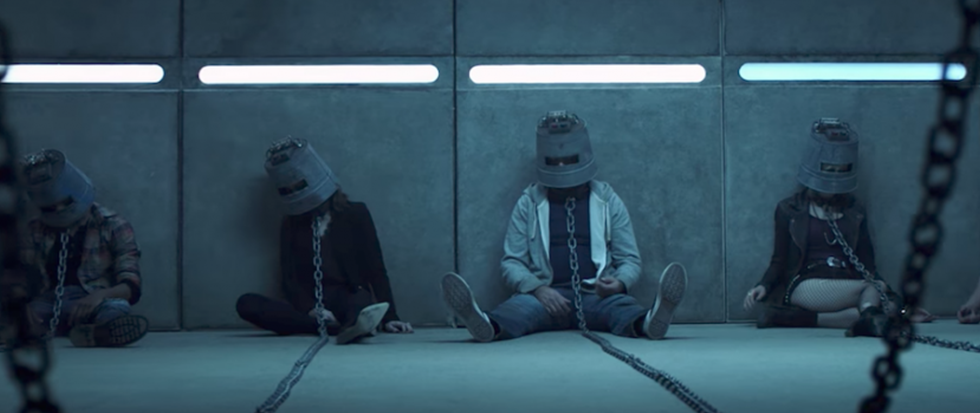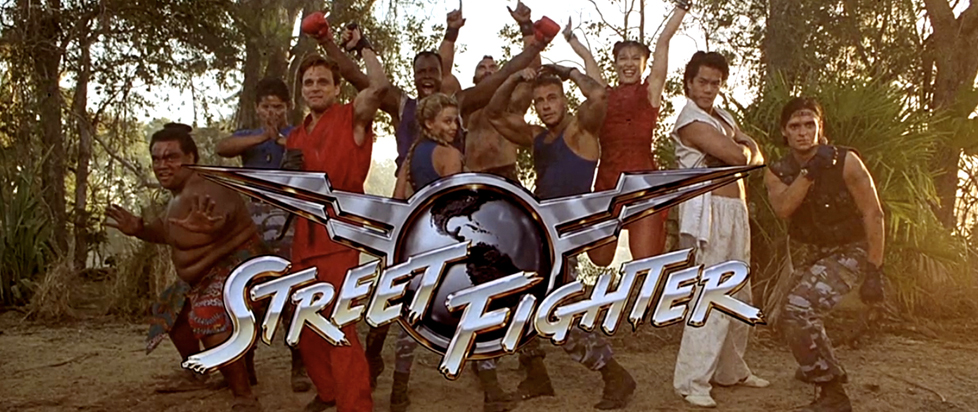
Jigsaw’s Twist is a Celebration of a Returning Franchise
Jigsaw is a movie made with newcomers in mind. Although it’s the eighth movie in the Saw franchise, it largely disregards every movie barring the first, but although newcomers can enjoy Jigsaw, it gives a very different kind of feeling to me as a fan.
Jigsaw uses elements that made up the most memorable parts of the other movies in new combinations, evoking familiar reactions in fans through its writing and cinematography without feeling like an obvious rehash.
There are obvious aspects used to tickle the nostalgia for long-time fans, as many long-running franchises do. It has Jigsaw’s puppet Billy, the Saw theme, the movie ends on a door slam and there’s a big museum-like scene showing off previous traps. I saw something more subtle in how the movie was made with the fans in mind though, and nowhere did I feel that more than in the movie’s ultimate twist.
Like the other movies there are two plotlines, one with players in Jigsaw’s game and the police investigating Jigsaw’s apparent return in the other. It’s all somewhat standard, but enjoyable, Saw fare until the big twist comes into play and the two remaining players come face to face with the game’s mastermind. The hooded figure holding them captive reveals himself to be none other than John Cramer, the long-dead original Jigsaw, living and breathing.
Jigsaw died in the third movie and every movie after that gave him more screen time through flashbacks, a long-running tradition in the series. Most would assume they’d do that again, but first time viewers may notice a lack of flashbacks. Apart from brief glimpses of the players’ pasts in the game, there don’t appear to be any at all.

This reveal of Jigsaw seemingly coming back from the dead to startle the audience has been done before in Saw V. In that movie, a flashback begins without any indication when Jigsaw accomplice Mark Hoffman walks into an elevator where a younger, healthier John Cramer is revealed to be inside, whom Hoffman doesn’t recognize. The tension heightens for a few seconds before Cramer drugs him with a needle and it’s revealed to be a flashback about how Hoffman met Jigsaw. While the secret transition to flashback was admittedly rather contrived, there’s no denying it gave an effective scare.
Jigsaw uses that element as its biggest twist, where it’s revealed everything in the game all took place 10 years prior, which technically means that everyone who assumed Jigsaw would only appear in flashbacks was absolutely right. The flashbacks never left, but the movie doesn’t make it obvious so soon. Instead it employs another element from another movie: the time discrepancy.
In Saw II, it’s revealed the camera feed the police see of the people in Jigsaw’s game is a recording and that everything they and the audience has seen has already happened. Jigsaw has a similar setup by having the police discover very similar-looking bodies corresponding to how the game played out 10 years ago, all while the audience sees the game they’re led to believe the bodies are coming from. This time it’s to make it look like John Cramer is still alive again, which gets pretty damn convincing with the aforementioned Saw V trick.

Through the time discrepancy trick another possibility for a twist was opened up with the reveal that the man who supposedly died at the beginning of the game actually lived. The misdirection utilized in that twist is commonly used in other media, but there’s a particular way it plays with the other Saw movies that seems more likely to catch a fan off-guard.
The aforementioned man at the beginning of the movie is shown waking up from his sedation at the last minute and is pulled into the wall of buzz saws as the camera pans through another door, leaving him to be sliced on the other side. For fans, it’s easy to brush that kind of perspective shot off as meaning to leave his fate to the imagination and put yourself into what the characters see. After all, the first couple of Saw movies had little in the way of explicit gore and did such cinematograph fairly often. Stylish camera pans and scene transitions are expected (looking at you Darren Lynn Bousman).
As it turns out, the audience’s imagination was probably a lot gorier than what actually happened. The man was cut as shown, but then immediately rescued by Jigsaw and became another one of his accomplices. This is yet another element of a previous movie, this time from Saw IV.
In Saw IV, the previously-mentioned accomplice Hoffman was presented as one of Jigsaw’s players in a game relying on their friend, Riggs. If Riggs failed his game, they would all die. Hoffman’s execution method was being strapped to a chair on a scale that would dip him into water connected to high voltage power equipment. When Riggs fails, the scale dips Hoffman into the water, the camera shows the high voltage sign and the movie then cuts to plotline B, where FBI agent Strahm is entering Jigsaw’s operating room. After it cuts back, Hoffman is left as a background object, supposedly dead until a few minutes later when it’s revealed he was in on the game.
Just like there, the man cut at the beginning of Jigsaw is out of focus until the reveal, but this time a body shown to the audience using the other tricks to dispel doubt, setting up the big mind-blower. If they didn’t show the body, Saw fans might suspect something, especially after Dr. Gordon’s five-movie-long disappearance.
Jigsaw’s twist has gotten a lot of detractors, with many questions about inconsistencies. I admit, you have to suspend your disbelief for some of it, like Jigsaw’s flatscreen TVs and Tobin Bell’s age (not that he looks that much older), but another thing I like about the Saw movies is that questions brought up are sometimes answered later on. Jigsaw taking a drug to stay perfectly still for the first movie is shown in Saw III, for example, and Hoffman being an accomplice in Saw IV explained how Jigsaw got police information through the first three movies.
Suspension of disbelief aside, Jigsaw’s twist and the way it uses ideas from the twists and turns of the other Saw movies makes it feel like a celebration of the returning franchise. It felt like a genuine Saw movie, which was the one thing I wanted from it most of all, because it’s more than the gore, traps and Tobin Bell that makes one. It was something special having that feeling of watching a new Saw movie for the first time again and I’m more than ready for the next one.





